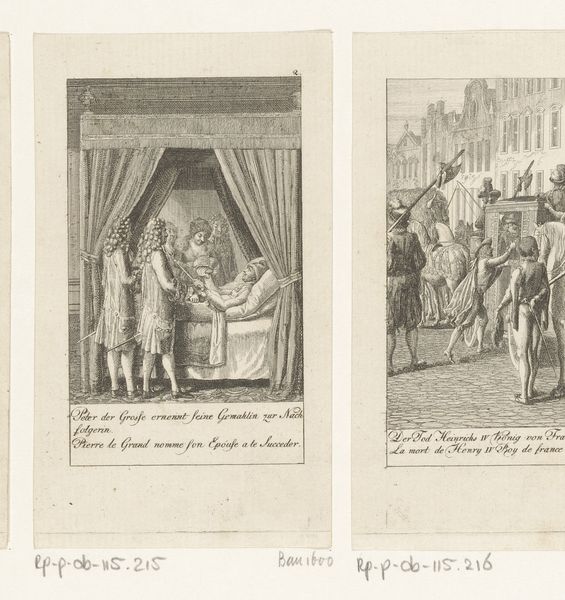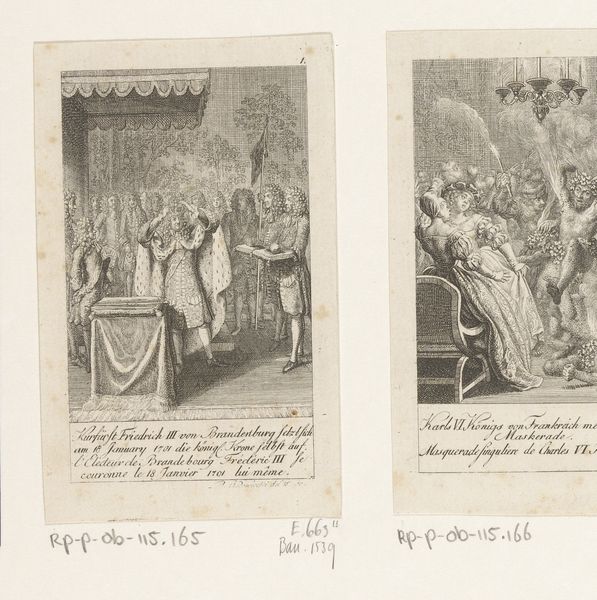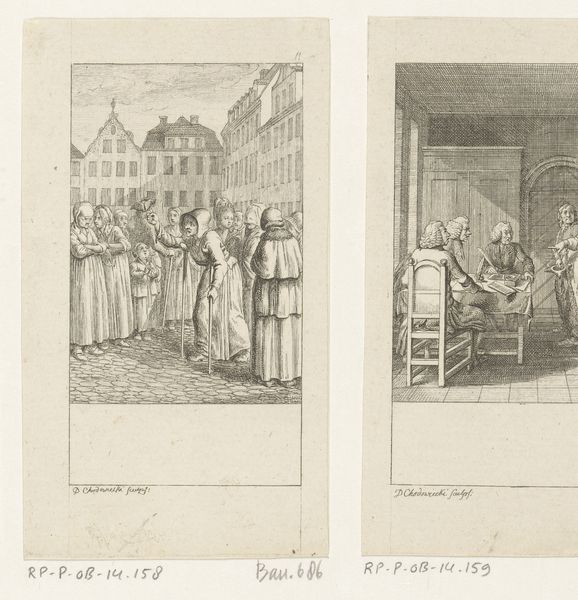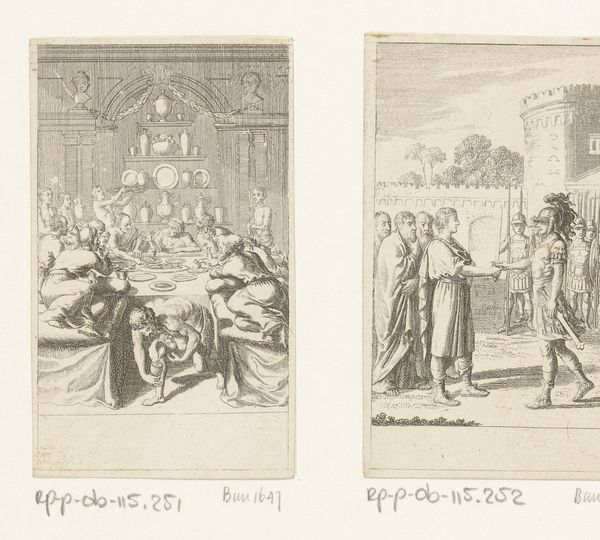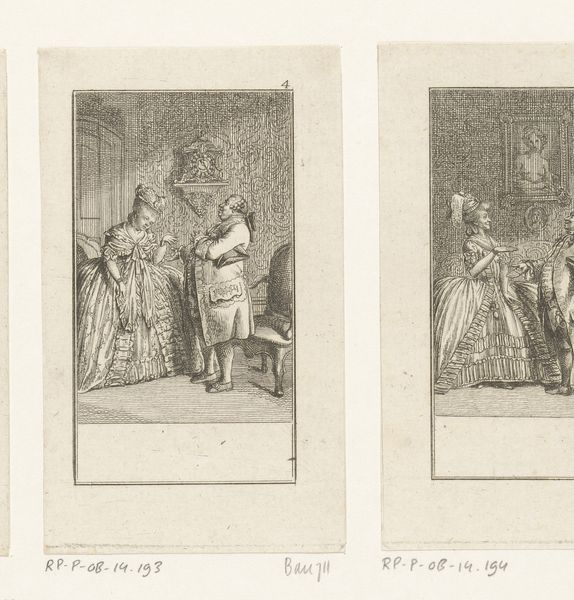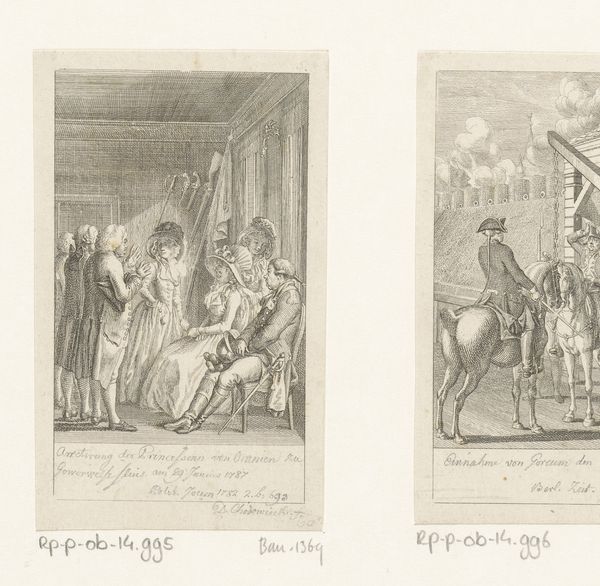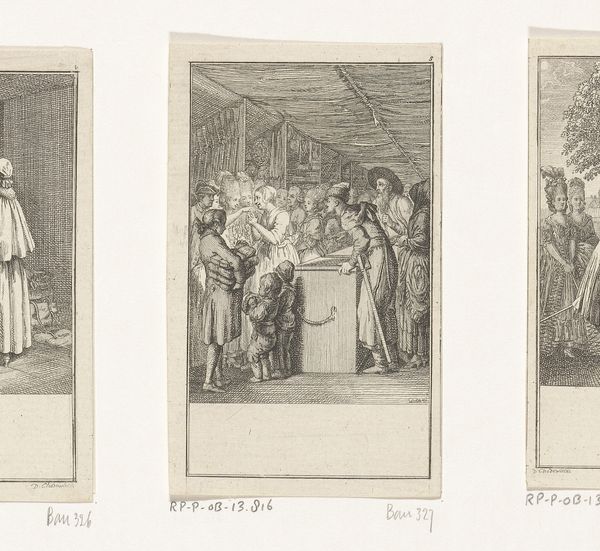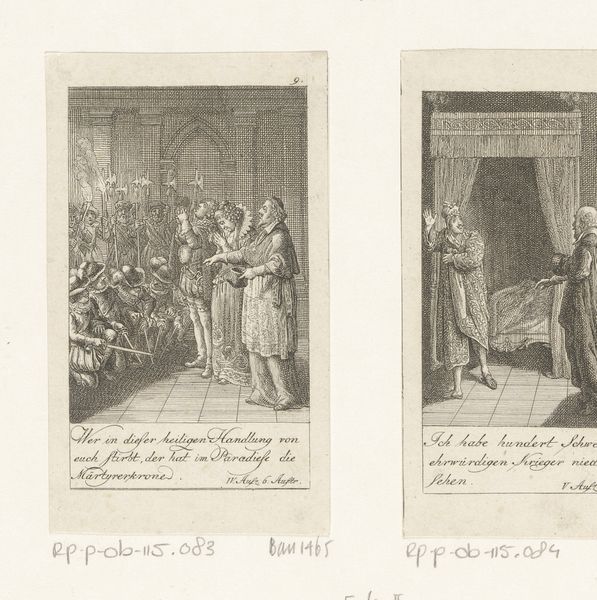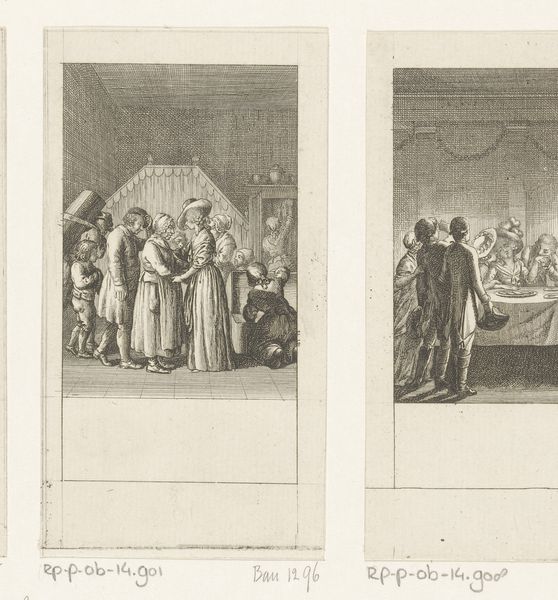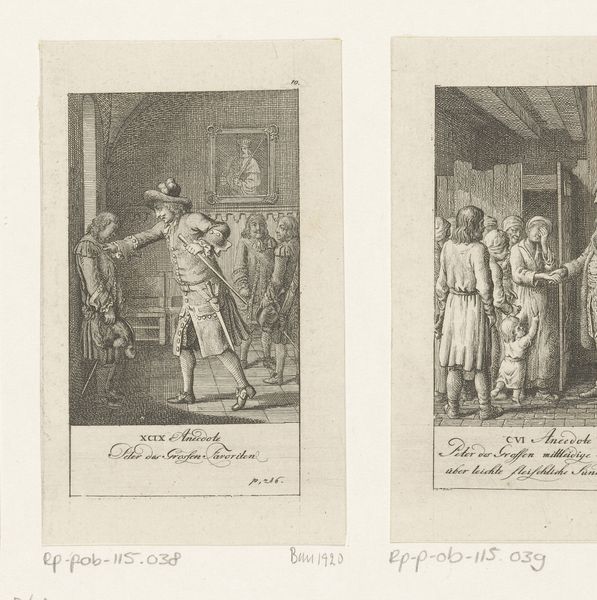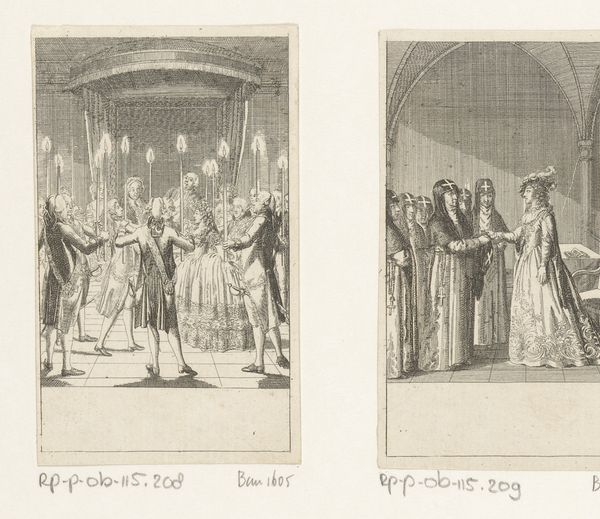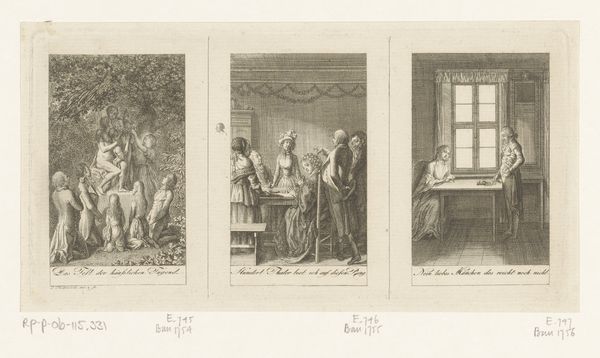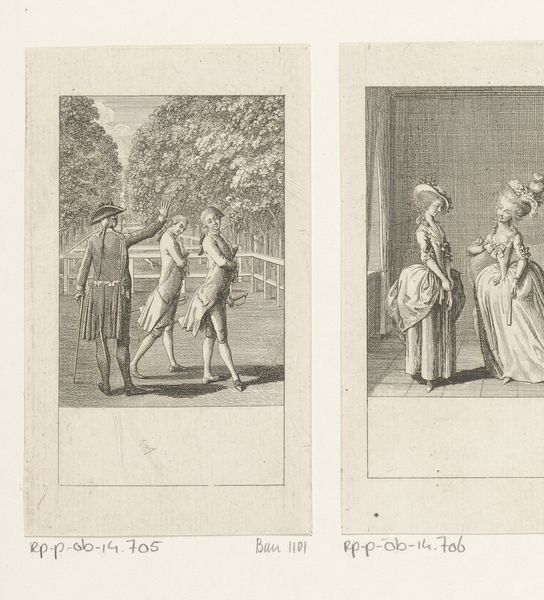
Peter de Grote wijst Catharina op zijn sterfbed aan als zijn opvolgster 1792
0:00
0:00
print, etching, engraving
#
portrait
# print
#
etching
#
old engraving style
#
romanticism
#
genre-painting
#
history-painting
#
engraving
Dimensions: height 89 mm, width 54 mm
Copyright: Rijks Museum: Open Domain
Editor: This print, created by Daniel Chodowiecki in 1792, is titled "Peter the Great on His Deathbed Appoints Catherine as His Successor." It’s an etching, and quite small. I’m struck by how it depicts this pivotal moment in Russian history with such formality and, perhaps, theatricality. How do you interpret its significance within the broader context of 18th-century art and power? Curator: It's crucial to consider Chodowiecki’s position as a Prussian artist working within the framework of the Enlightenment. He wasn’t simply illustrating history; he was crafting a narrative with political implications. This image speaks volumes about the role of imagery in constructing and reinforcing dynastic legitimacy, and particularly interesting in this etching is the contrast to what's outside that chamber to how power is negotiated inside it. Did Catherine truly succeed by appointment alone? What political forces outside are lurking? Editor: So, the print isn't just showing us an event; it's shaping a certain public perception of that event? Curator: Precisely. This ties into the socio-political role of art during that time. Prints like this were mass-produced and circulated widely. Ask yourself, who was the intended audience? What message was Chodowiecki, and the patrons who commissioned the print, trying to convey about succession, about Catherine’s authority, and about the nature of power itself? Consider it within the context of anxieties surrounding female leadership. How does this visual representation attempt to quell or address those anxieties? Editor: That's fascinating, it encourages me to think about not only what is being shown, but why, and to whom. The circulation and the message behind such prints really give them power beyond a simple depiction. Curator: Absolutely. Analyzing this print helps us to better understand how historical narratives are visually constructed, and the public role that art played in legitimizing those narratives. Hopefully, this changed how you think about similar pieces going forward. Editor: It has, definitely. Thank you!
Comments
No comments
Be the first to comment and join the conversation on the ultimate creative platform.
